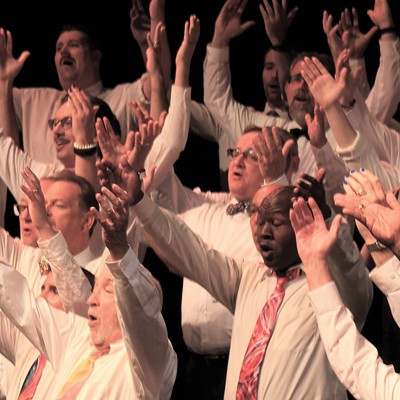It's a double-Hedda!
Two Heddas are running in repertory at Beowulf Alley Theatre as the first offerings of the season: Henrik Ibsen's classic Hedda Gabler, and Jeff Whitty's The Further Adventures of Hedda Gabler, a contemporary riff on the iconic character.
The conjunction of the two shows is a clever idea, and while the execution is far from perfect, it's a shame that audiences won't have more time to experience them. Because of unexpected renovations, Beowulf had to delay the start of its fall season and shorten the planned run. Therefore, the two Heddas opened last week and will conclude this weekend.
The productions are being staged on alternate nights, so you could see the somber Hedda Gabler and give the strange, witty romp The Further Adventures a pass, or vice versa. But you'd be missing out.
Let's start with the classic. Ibsen's play (first published in 1890) revolves around the complex title character, played here by Bree Boyd-Martin. A Beowulf regular, Boyd-Martin has a pale beauty that's appropriate to the role. Her Hedda is restrained, vibrating with a certain frightening quietness.
In her heyday, the character was the Hedda Gabler, famed for her beauty and brains. Now she's Hedda Tessman. No longer in the blush of youth, she has deigned to marry the underwhelming scholar George Tessman (Nicholas Salyer).
Suffering under the constraints of her comfortable but confined life, Hedda has unresolved feelings for a former paramour—the drunken, brilliant Eilert Loveborg (Evan Engle). We watch her brutally manipulate Loveborg as well as his lover, Thea (Lily Delamere).
Director Michael Fenlason has moved the play from 19th-century Norway to 1960s America. The set is a simple but attractive midcentury interior painted a period-appropriate sea-foam blue. (In fact, it's the most-ambitious set I've seen at Beowulf—a pity it has to go down so quickly.)
The switch to the '60s works well. Middle-class women were still under pressure to perform as housewives, limiting their own career ambitions in favor of assisting the men they married. However, it was also a time of sweeping social change, and the time period makes Hedda's unpleasant actions more ambiguous. She's certainly trapped by her own restless, cruel nature, but she's also trapped by her circumstances.
As he did last season with Shakespeare's King Lear, Fenlason has significantly cut the script of Hedda Gabler, and updated all of the references. I admire his willingness to adapt and shorten classic plays, but, as with that Lear, there's something about this Hedda that drags. The blocking, for instance, feels limited. In several scenes, when there are important beat changes (significant shifts in the character's intentions), the actors blithely sit through them, barely moving a muscle.
The production has a feeling of being under-rehearsed—it is well-cast, and there was clearly thought behind the production's concept. But the actors don't feel quite sure of themselves; they are not confident enough to take risks. As with the character of Hedda herself, one senses powerful, untapped potential lurking beneath the surface.
As for The Further Adventures of Hedda Gabler, you could enjoy this show without having ever seen a production of Ibsen—but it helps.
The Further Adventures, first staged in 2006, picks up right after the last scene of Hedda Gabler. Our tragic heroine (played here by China Young) finds herself in a sort-of famous-fictional-character afterlife. To her dismay, her boring husband, Tessman, is still around (now played by Matt Brown). Fortunately, so are many other iconic characters—from other plays.
Medea (Rebecca Sweet), the title character who kills her children in the Greek tragedy by Euripides, shows Hedda the ropes of long-lasting fame. Only fictional characters who are remembered survive, Medea teaches her. To pass out of collective memory is to die, permanently. Hedda is less than pleased at her new pseudo-immortality, to say the least.
Playwright Whitty is best-known for writing the book for the popular puppet musical Avenue Q, and this play shares Avenue Q's irreverent sensibility and dark humor.
Much of Adventures' broad, farcical comedy is fun for everyone, but it has its limitations: Its success depends partly on the audience's knowledge of theater and literature. It's to your advantage to have more than a passing acquaintance with Hedda Gabler, Greek tragedy and Gone With the Wind, as well as the characters from Mart Crowley's play (and movie) The Boys in the Band.
Seeing Adventures the night after seeing Hedda Gabler means the source material is fresh in your mind—the "new adventures" even happen on the same set as the previous play.
Director Nicole Scott takes advantage of the meta nature of the script, sending the actors into the audience and up and down the aisles. Still, the production is too long, reaching what feels like a natural stopping point several times before finishing. The lighting is uneven—at times too bright, and at others too dim.
There's one really striking moment, though: When the cast of Hedda Gabler appears to the Adventures cast—and one Hedda watches the other perform. Because Adventures is largely concerned with storytelling (Why are stories important? How do fictional characters retain their relevance when the "real world" changes?), this meta-moment is all the more poignant if you've just seen Hedda's story enacted the night before. You leave the theater thinking about storytelling and plays, and why they still matter in our lives, even if, at times, the medium of theater seems outdated.
Taken separately, the two productions are enjoyable but flawed; taken together, they leave you reflective and engaged.









